Анимация солнечного орбитального аппарата Европейского космического агентства. Кредит: ESA/Medialab
Последние снимки с Solar Orbiter показывают Солнце полностью с беспрецедентной детализацией. Снимок был сделан 7 марта 2022 года, когда космический корабль летел прямо между Землей и Солнцем.
Одно из изображений, полученных с помощью экстремальной ультрафиолетовой камеры (EUI), является изображением полного солнечного диска и внешней атмосферы, короны, с самым высоким разрешением из когда-либо сделанных.
Еще одно изображение, полученное с помощью прибора Spectral Imaging of the Coronal Environment (SPICE), представляет собой первое полное изображение Солнца за 50 лет и лучшее изображение, полученное на длине волны бета-излучения Лаймана в ультрафиолетовом излучении, испускаемом газообразным водородом.
Снимки были сделаны, когда солнечный орбитальный аппарат находился на расстоянии около 75 миллионов километров, на полпути между нашим миром и его родительской звездой. Телескоп высокого разрешения EUI захватывает изображения с таким высоким пространственным разрешением, что на таком близком расстоянии требуется мозаика из 25 отдельных изображений, чтобы покрыть все Солнце. Снятые один за другим, полное изображение было получено в течение более четырех часов, потому что каждый фрагмент занимает около 10 минут, включая время, которое требуется космическому кораблю, чтобы перейти от одной части к другой.
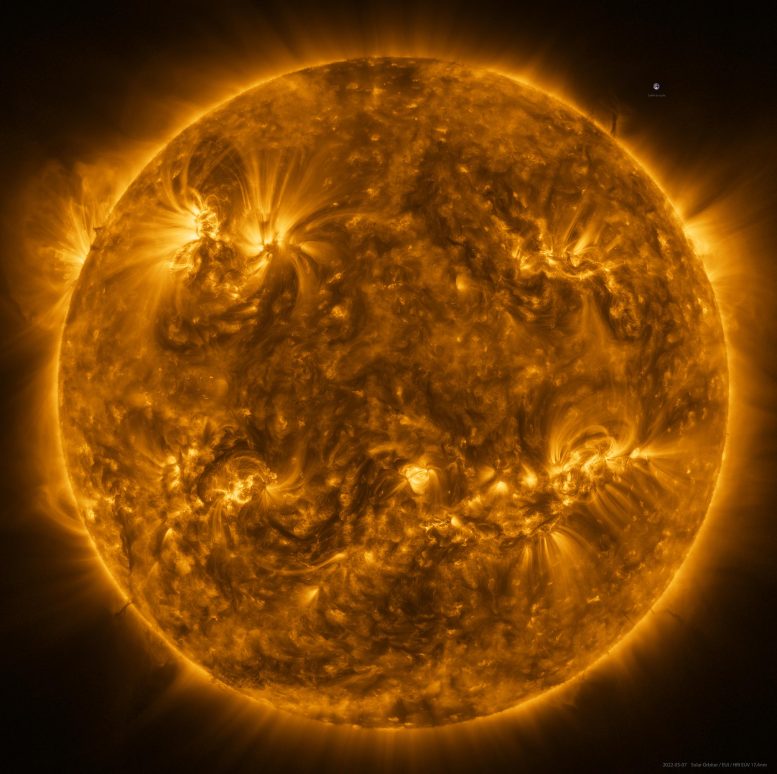
Солнце, видимое с помощью Solar Orbiter в крайнем ультрафиолетовом свете с расстояния примерно 75 миллионов километров. Изображение представляет собой мозаику из 25 отдельных изображений, сделанных 7 марта 2022 года телескопом высокого разрешения Ultraviolet Imaging Instrument (EUI). Это изображение было получено при длине волны 17 нанометров, в крайнем ультрафиолетовом диапазоне электромагнитного спектра, на котором видны верхние слои атмосферы Солнца, корона, температура которой составляет около миллиона градусов по Цельсию. Также включено изображение шкалы с Земли в положении 2 ч. Авторы и права: ESA и NASA/Solar Orbiter/EUI Team; Обработка данных: Э. Краайкамп (ROB)
В целом, финальное изображение Он содержит более 83 миллионов пикселей в сетке размером 9148 x 9112 пикселей. Для сравнения, это изображение имеет разрешение в десять раз лучше, чем то, что может отображать экран телевизора 4K.
EUI изображает Солнце на длине волны 17 нанометров, в крайнем ультрафиолетовом диапазоне электромагнитного спектра. Это показывает верхнюю атмосферу Солнца, корону, которая имеет температуру около миллиона градусов.[{» attribute=»»>Celsius.
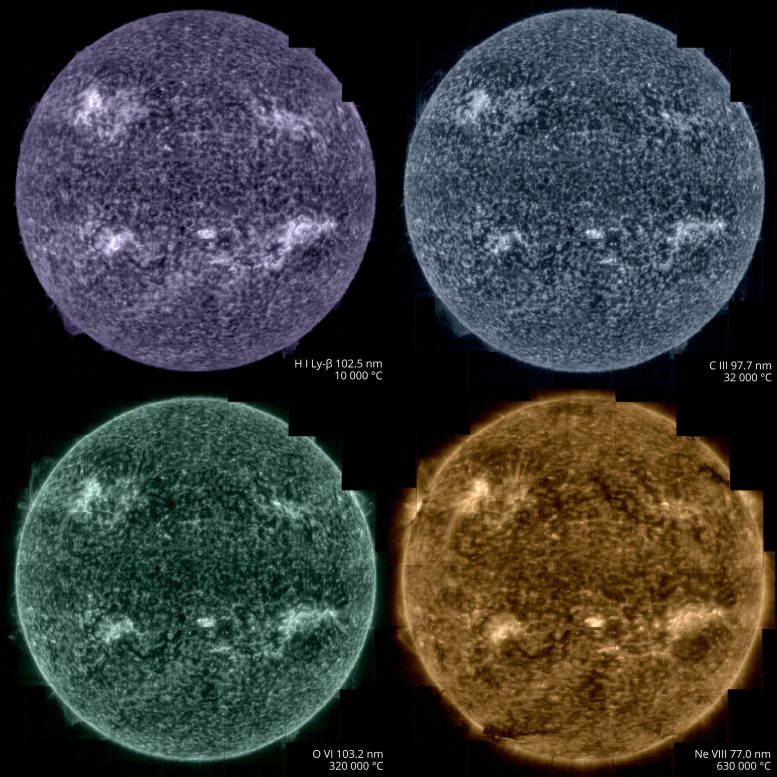
Solar Orbiter took images of the Sun on March 7, from a distance of roughly 75 million kilometres, using its Spectral Imaging of the Coronal Environment (SPICE) instrument. SPICE takes simultaneous “spectral images” at several different wavelengths of the extreme ultraviolet spectrum by scanning its spectrometer slit across a region on the Sun. The different wavelengths recorded correspond to different layers in the Sun’s lower atmosphere. Purple corresponds to hydrogen gas at a temperature of 10,000°C, blue to carbon at 32,000°C, green to oxygen at 320,000°C, yellow to neon at 630,000°C. Each full-Sun image is made up of a mosaic of 25 individual scans. It represents the best full Sun image taken at the Lyman beta wavelength of ultraviolet light that is emitted by hydrogen gas. Credit: ESA & NASA/Solar Orbiter/SPICE team; Data processing: G. Pelouze (IAS)
At the 2 o’clock (near the image of the Earth for scale) and 8 o’clock positions on the edges of the Sun, dark filaments can be seen projecting away from the surface. These ‘prominences’ are prone to erupt, throwing huge quantities of coronal gas into space and creating ‘space weather’ storms.
In addition to EUI, the SPICE instrument was also recording data during the crossing. These too needed to be pieced together as a mosaic.
SPICE is designed to trace the layers in the Sun’s atmosphere from the corona, down to a layer known as the chromosphere, getting closer to the surface. The instrument does this by looking at the different wavelengths of extreme ultraviolet light that come from different atoms.
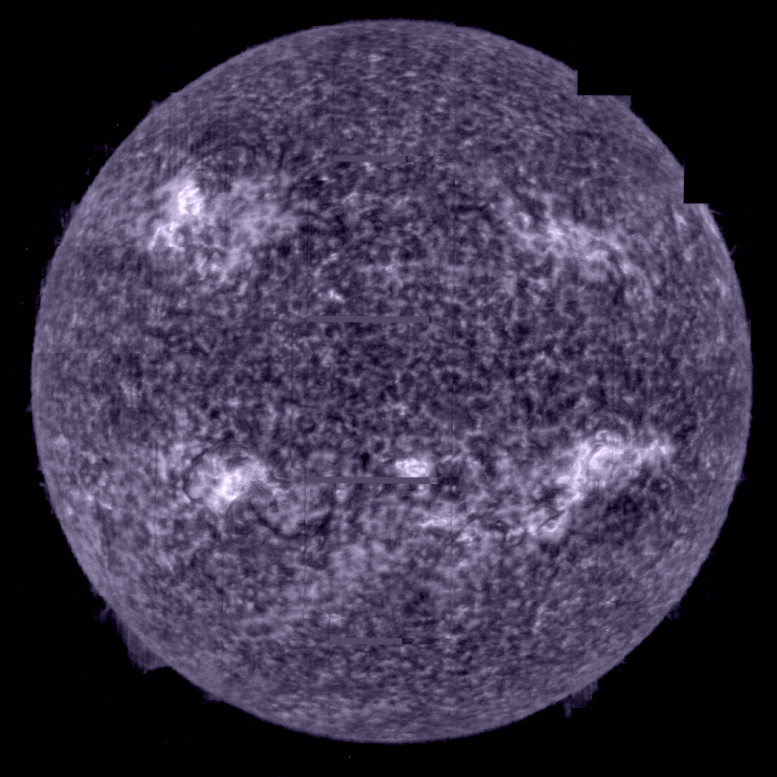
Taking the Sun’s temperature. Credit: ESA & NASA/Solar Orbiter/SPICE team; Data processing: G. Pelouze (IAS)
In the SPICE sequence of images purple corresponds to hydrogen gas at a temperature of 10,000°C, blue to carbon at 32,000°C, green to oxygen at 320,000°C, yellow to neon at 630,000°C.
This will allow solar physicists to trace the extraordinarily powerful eruptions that take place in the corona down through the lower atmospheric layers. It will also allow them to study one of the most puzzling observations about the Sun: how the temperature is rising through the ascending atmospheric layers.
Usually the temperature drops as you move away from a hot object. But above the Sun, the corona reaches a million degrees Celsius whereas the surface is only about 5000°C. Investigating this mystery is one of the key scientific objectives of Solar Orbiter.
The images were taken on 7 March, precisely when Solar Orbiter crossed the Sun-Earth line, so the images can be compared with Earth-bound solar instruments and cross-calibrated. This will make it easier to compare results from different instruments and observatories in future.
On March 26, Solar Orbiter reaches another mission milestone: its first close perihelion. The spacecraft is now inside the orbit of Mercury, the inner planet, taking the highest resolution images of the Sun it can take. It is also recording data on the solar wind of particles that flows outwards from the Sun.
And this is just the start, over the coming years the spacecraft will repeatedly fly this close to the Sun. It will also gradually raise its orientation to view the Sun’s previously unobserved polar regions.
Solar Orbiter is a space mission of international collaboration between ESA and NASA.

«Наркоман поп-культуры. Поклонник телевидения. Ниндзя алкоголика. Абсолютный фанат пива. Профессиональный знаток твиттера».



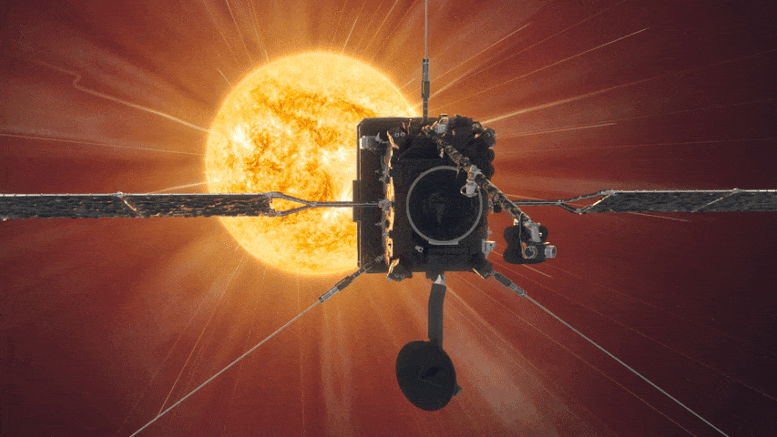
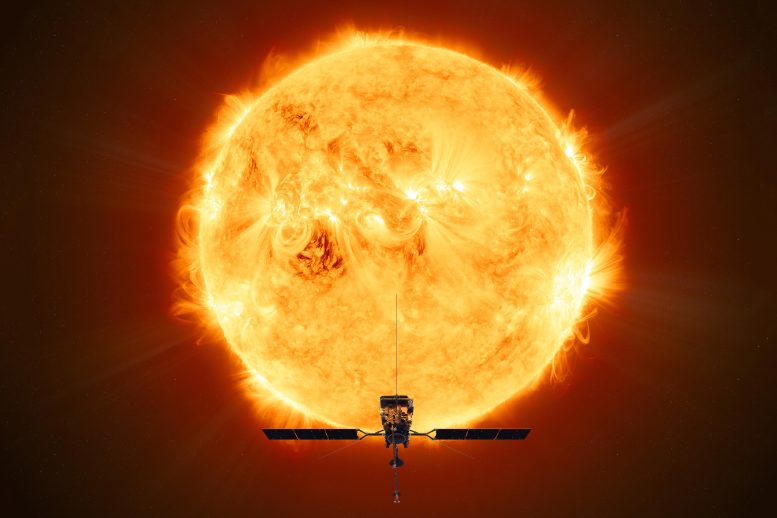
More Stories
Астронавты НАСА Бутч Уилмор и Сонни Уильямс прибывают во Флориду во время первого пилотируемого космического полета Боинга.
Снимок Хаббла может содержать доказательства звездного каннибализма в туманности в форме гантели
Ученые впервые запечатлели на видео танец белков и жиров: ScienceAlert